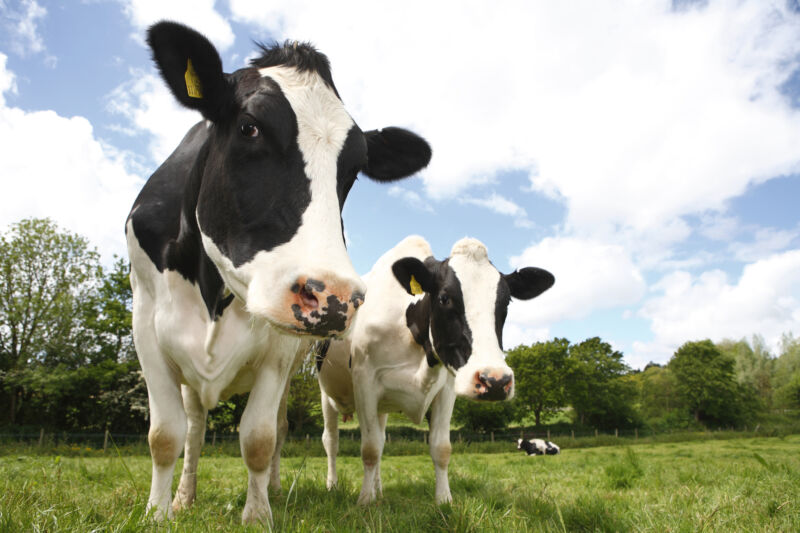Wild migratory birds likely spread a deadly strain of bird flu to dairy cows in Texas and Kansas, state and federal officials announced this week.
It is believed to be the first time the virus, a highly pathogenic avian influenza (HPAI), has been found in cows in the US. Last week, officials in Minnesota confirmed finding an HPAI case in a young goat, marking the first time the virus has been found in a domestic ruminant in the US.
According to the Associated Press, officials with the Texas Animal Health Commission confirmed the flu virus is the Type A H5N1 strain, which has been ravaging bird populations around the globe for several years. The explosive, ongoing spread of the virus has led to many spillover events into mammals, making epidemiologists anxious that the virus could adapt to spread widely in humans.
For now, the risk to the public is low. According to a release from the US Department of Agriculture (USDA), genetic testing by the National Veterinary Services Laboratories indicated that H5N1 strain that spread to the cows doesn't appear to contain any mutations that would make it more transmissible to humans. Though the flu strain was found in some milk samples from the infected cows, the USDA emphasized that all the milk from affected animals is being diverted and destroyed. Dairy farms are required to send only milk from healthy animals to be processed for human consumption. Still, even if some flu-contaminated milk was processed for human consumption, the standard pasteurization process inactivates viruses, including influenza, as well as bacteria.
So far, officials believe the virus is primarily affecting older cows. The virus was detected in milk from sick cows on two farms in Kansas and one in Texas, as well as in a throat swab from a cow on a second Texas farm. The USDA noted that farmers have found dead birds on their properties, indicating exposure to infected birds. Sick cows have also been reported in New Mexico. Symptoms of the bird flu in cows appear to include decreased milk production and low appetite.
But so far, the USDA believes the spread of H5N1 will not significantly affect milk production or the herds. Milk loss has been limited; only about 10 percent of affected herds have shown signs of the infection, and there has been "little to no associated mortality." The USDA suggested it will remain vigilant, calling the infections a "rapidly evolving situation."
While federal and state officials continue to track the virus, Texas officials aim to assure consumers. "There is no threat to the public and there will be no supply shortages," Texas Agriculture Commissioner Sid Miller said in a statement. "No contaminated milk is known to have entered the food chain; it has all been dumped. In the rare event that some affected milk enters the food chain, the pasteurization process will kill the virus."



3175x175(CURRENT).thumb.jpg.b05acc060982b36f5891ba728e6d953c.jpg)
Recommended Comments
There are no comments to display.
Join the conversation
You can post now and register later. If you have an account, sign in now to post with your account.
Note: Your post will require moderator approval before it will be visible.